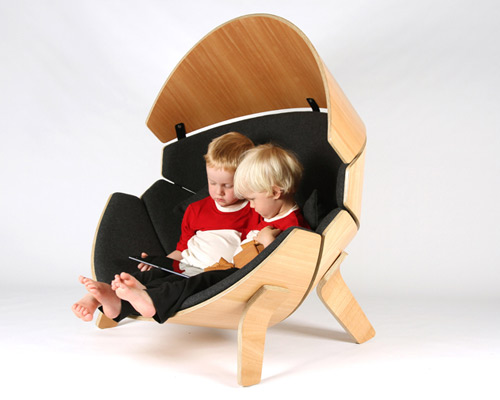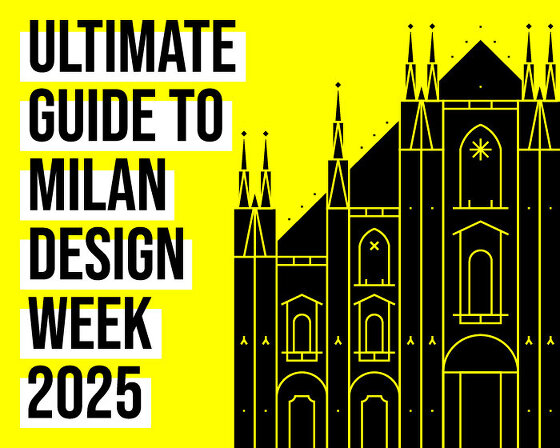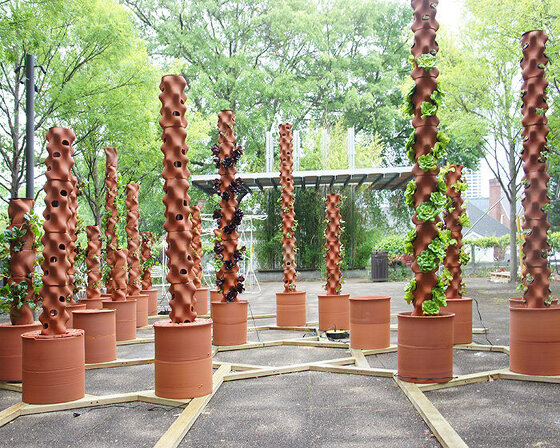think & shift forms molded plywood hideaway chair for children
all images courtesy of think & shift
new zealand childcare provider new shoots tasked think & shift to design a product that enables children to escape from the noise and business of their surrounding environment. the result, is ‘hideaway chair’ a molded plywood unit that provides a comforting, private enclosure for relaxation and quiet time.
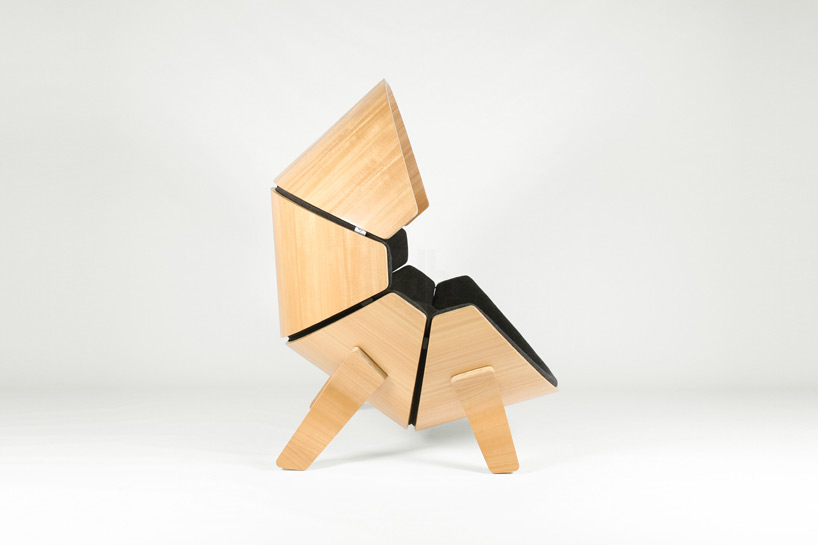
the ‘hideaway chair’ is made from four large bent ply panels
the seat is geared for children, but is also visually appealing to adults. made of molded plywood with wood upholstery, it takes form as a spherical shell of four swooping, semi-circular sections. the shape makes the chair closed, and encourages children to sit in whatever fashion suites them. ‘hideaway’ is very low, suggesting to kids that it was made specifically for them, not grown-ups. gaps between each section gives space for items — dirt included — to fall through, and all upholstery can be removed for easy cleaning or replacement.

back
‘to design this product, we had to disregard everything we knew about ergonomics. in research, we discovered evidence which backed our intuition that children do not sit the same way adults do. given the opportunity, kids sit upside-down, side-ways, curled up in a ball, with multiple friends, with a blanket, on their knees, their backs — just about every way, other than the up-right, straight-backed position chairs force them into.’ says think & shift.

detail
‘hideaway’, isn’t simply a scaled down version of a normal chair, but a entirely different approach to ergonomics and comfort. the seat is currently being used in new shoots childcare facilities all around new zealand, and being developed for international distribution in the near future.

upholstered panels are removable for easy cleaning and maintenance

‘hideaway chair’ profile

panel close up

arm rest close up
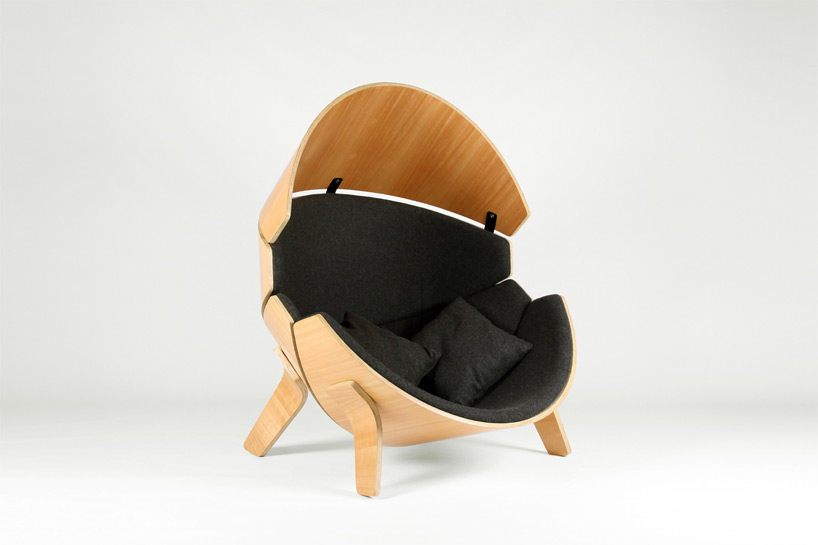
the unit can seat one to two young children

the seat was designed to provide children with a comforting sense of enclosure

curved panels provide auditory and visual privacy
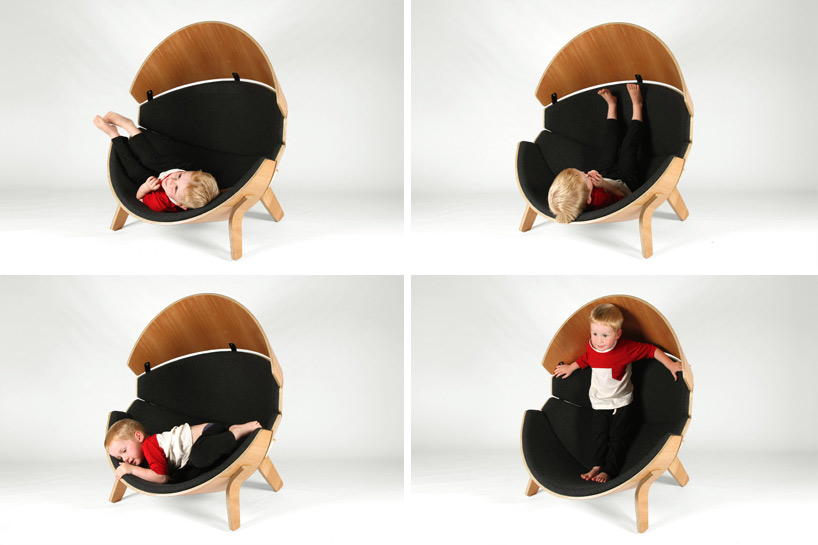
challenging conventional ergonomics
designboom has received this project through its ‘DIY submissions’ feature, which welcomes readers to submit their own work for publication. see more designboom readers submissions here.
edited by: nick brink | designboom
